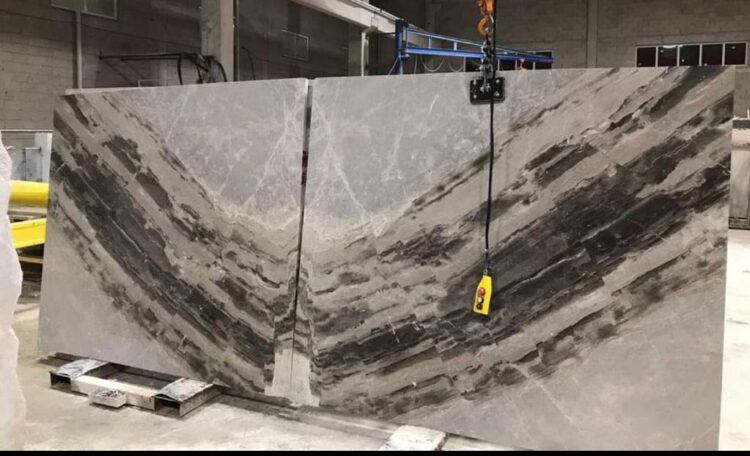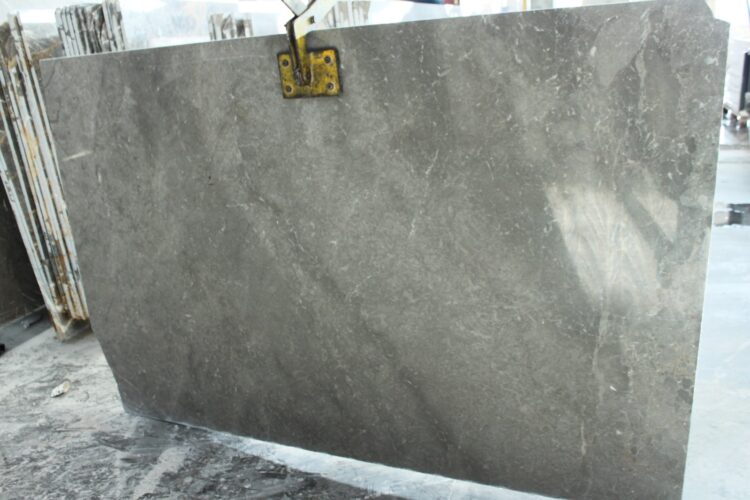This interview with Prof. Dr. Mahmut Yavuz, one of the leading names in the marble industry, provides an important source of information on choosing the most suitable location for marble factories. Prof. Yavuz’s deep knowledge and experience in the sector plays a critical role in the strategic positioning of marble production facilities. His forward-thinking approach and command of the changing dynamics in the industry is a key guide for the future success of the marble industry.
What are the main factors considered in selecting the most suitable plant location for marble factories?
I would like to answer this question by first mentioning the factors that affect the choice of plant location for any plant. Factors affecting the choice of plant location: Market factor; Proximity to competitors and sub-industries; Transportation facilities; Raw material and water needs; Labor and wage factor; Land size and climatic conditions; Incentive measures and challenging conditions.
As in all kinds of plant location selection problems, the factors mentioned above should be taken into consideration in plant location selection for marble factories. In the case of marble factories, the most appropriate plant location selection problem can be examined under four main headings as Economic, Production, Marketing and Environmental factors.
Under the heading of economic factors; land, establishment and transportation costs and incentives can be listed. Among these factors, land cost varies from region to region and can be seen as an investment advantage in developing regions. Establishment costs include the costs of all components within the facility and do not actually vary from region to region, but increase as you move away from the main suppliers. Transportation costs are a factor that has become the most important cost item today. It includes both the transportation of raw materials to the factory and the transportation of processed products from the factory to the desired distribution points and is now the biggest problem due to rising fuel costs. Incentives are perhaps the most striking economic factor. In some regions, practices created to attract investors such as cheap land costs, energy supply, tax reductions, etc. can make regions that do not make much sense in some cases attractive for investment.
Factors of production are analyzed under five main headings. These are; Raw material supply and proximity to raw material resources; Labor supply; Technology transfer; Climate favorability and Water supply. Proximity to raw material sources has become very important due to increasing transportation costs. Raw material supply is also a very important issue. As we listen to the stories of buyers lying on branded blocks in marble quarries, the importance of raw material supply becomes even more understandable. Labor supply is one of the most important problems today. Since the new generation of manpower is looking for cleaner, less tiring and more advantageous jobs, it is becoming more and more difficult to find manpower to work in both quarries and factories. When examined under the heading of technology transfer, it becomes advantageous to invest in the regions where marble factories are located. People see new production technologies in neighboring enterprises and are eager to apply them to their own enterprises. Mild regions in terms of climate provide advantages for both marble quarries and factories. Water supply is extremely important in marble factories. Since water is the main input of production processes after marble, regions where there is no water shortage should be selected. Water supply is perhaps one of the most important selection criteria in today’s world where global climate changes are shaping the world.
Another heading is Marketing factors, where the choice of the location for a marble factory should be evaluated in terms of both existing markets and new market opportunities.
The last heading is Environmental factors, perhaps one of the most important constraints today. Waste water is one of the most important environmental factors in marble factories. In some regions, new plants are not allowed to be built just for this reason. Since the water from the factory production process causes serious blockages when it is directly discharged into the sewerage system, this problem is actually easily solved by purifying the water from marble wastes and feeding it back into the system or discharging it into the sewerage system. Another environmental factor is marble waste. A sustainable solution has not yet been reached for the recycling of marble waste generated as a result of production processes in factories. Visual pollution is another environmental factor. In marble factories, both the appearance of the marble blocks to be processed in the stock area and the appearance of the production wastes are obstacles for the establishment of marble factories in many regions.
The last topic is Environmental factors, perhaps one of the most important constraints today. Waste water is one of the most important environmental factors in marble factories. In some regions, new plants are not allowed to be built just for this reason. Since the water from the factory production process causes serious blockages when it is directly discharged into the sewerage system, this problem is actually easily solved by purifying the water from marble wastes and feeding it back into the system or discharging it into the sewerage system. Another environmental factor is marble waste. A sustainable solution has not yet been reached for the recycling of marble waste generated as a result of production processes in factories. Visual pollution is another environmental factor. In marble factories, both the appearance of the marble blocks to be processed in the stockpile area and the appearance of production wastes constitute an obstacle for the establishment of marble factories in many regions. Finally, the most suitable location for marble factories should be chosen by taking into account legal obligations in some areas and facilities such as specialized organized industrial zones in others.
About twenty years ago, I was a thesis advisor to a Master’s student on site selection for marble factories. With the help of a decision model including the aforementioned factors, we worked on site selection for a new factory planned to be established by a company that was in operation at the time. Those who wish can access more detailed information by examining the thesis.
What are the effects of climatic factors such as temperature, humidity and precipitation on marble processing processes?
I would like to emphasize that these processes are more important for marble quarries than marble factories. Climatic factors and land conditions are of great importance for the functioning of enterprises in the marble sector. The continuity of production in marble quarries is directly related to climate and land conditions. In very cold and rainy climates, production in quarries depends on climate and land conditions. In regions with very harsh climates, various problems may be encountered in the production processes of blocks waiting for a long time in the stockpile in marble factories. If we make a generalization, production processes should be shaped according to climatic factors, since we cannot control the situation of finding any mineral in any place, depth and shape we want. If you find the world’s most valuable natural stone in one of the harshest climates in the world, of course, you want to work for 3-5 months and still produce as much as possible from the site.
What are the geological conditions suitable for marble extraction?
In fact, a book could be written on this question. However, I would like to answer this question in a simple way. According to recent data, our country has a rich natural stone potential due to its geological structure and has 5.1 billion m3 (13.9 billion tons) of natural stone reserves, 40% of the world’s 15 billion m3 reserves. In addition, Turkey has become one of the ten leading producers of natural stone in the world. Almost all of the production is carried out by the private sector. Annual natural stone production in Turkey is around 11.5 million tons and the total slab production capacity of processing plants is around 6.5 million m2 . This means that the geological conditions suitable for marble extraction are those in the region in which our country is located. If we make a more technical explanation, the richest natural stone formations in the world are found in the Alpine belt. Since Turkey is part of the Alpine belt, our country has ideal geological conditions for marble formation.
What strategies are recommended to operate in harmony with society and the environment?
Today, with the increasing social awareness, environmentally friendly production strategies have gained great importance. First of all, if we evaluate marble production in quarries, only the original topography of the region is disturbed by production activities in quarries. Since drilling-blasting practices and harmful/toxic chemicals are not used in the production processes in marble quarries, the damage to nature is limited to topography degradation. However, the real problem is the pollution caused by throwing crushed, shattered and non-economically valuable marble wastes around the quarry and the failure to implement projects to restore them to nature after the quarry production activities are completed. In fact, the transition to new technology production processes in both quarries and marble factories will bring harmony with society and the environment.
How do the infrastructure and transportation facilities in the region where the facility will be established affect the production processes?
Infrastructure and transportation facilities in the region where the facility will be established will of course positively affect the production processes. A good example of this is İscehisar Marble Organized Industrial Zone, which is Turkey’s First Marble Specialized Organized Industrial Zone. If you want to invest here, you can have significant advantages with various facilities and incentives. However, in some Organized Industrial Zones, there are problems even in obtaining an investment permit for the marble business line, for example, due to the wastewater to be discharged into the sewer and its content. In addition, some Organized Industrial Zones support investment areas in relatively newer technology branches. However, it should not be forgotten that the mining sector is more advantageous for the Turkish economy in terms of added value than any other sector.
What strategies can be developed to adapt to market demands and industry dynamics?
I think the most important issue is actually the answer to this question and the answer to this question is actually a mining/natural stone/marble policy issue. With so many marble factories in Turkey, should new ones be opened? What are the capacities of marble factories in Turkey? At what occupancy rates do the different workbenches in each marble factory operate? What is the efficiency of the marble quarries in operation?
Many problems such as the fact that many enterprises operating in the natural stone / marble sector produce products with the same characteristics from neighboring quarries and then compete with each other and sell the products they produce with great effort at very low prices with serious discounts can be counted in this context.
As with all minerals, marbles are natural riches that were formed millions of years ago, are depleted and cannot be replaced. For this reason, attention should be paid to this issue every time a quarry is opened and a block of marble is brought to the factory.






















 +90 532 585 51 95
+90 532 585 51 95 +90 532 585 51 95
+90 532 585 51 95